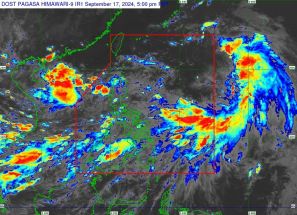Marcos doing well in his first 60 days

Before the inauguration of President Ferdinand Marcos Jr., we received a prognosis by an investment banker expressing doubts that the world would accept the late dictator’s son because of his lack of leadership qualities, management experience and a college degree.
Yet as Marcos completes his first two months in office, within the 100-day “honeymoon” allowed a new president, many world leaders – including US President Joe Biden and Pope Francis – have already welcomed his presidency and expressed support.
Regardless of the acceptance by his peers, however, questions linger about his stance on human rights, the view possibly dimmed by the shadow cast by the grim records of past Philippine leaders, including his father Marcos Sr. and former president Rodrigo Duterte.
His Justice Secretary Crispin Remulla is not helping any, not after rejecting calls to act on the case of former senator Leila de Lima, who has been detained on unfounded charges since 2017. Neither is Interior and Local Government Secretary Benhur Abalos Jr., who barred opposition leaders, lawmakers, justices, lawyers, academics and bureaucrats from personally greeting De Lima on her 63rd birthday on Saturday at Camp Crame.
But we see a glimmer of hope in Marcos’ display of open-mindedness. To our amazement, he attended the burial of former president Fidel V. Ramos, who played a key role in the 1986 People Power Revolt that overthrew his father’s regime. His list of holidays for 2023 includes Feb. 25, recognizing the EDSA event.
If Marcos will continue to prove that he is above the red-versus-yellow quarrels and that he will not only tolerate but even champion democracy and respect human rights, he will continue to earn the respect not only of Filipinos but also of world leaders.
One good thing going for Marcos is his having assembled a solid economic team led by Finance Secretary Benjamin Diokno, recognized as Global Central Banker of the Year by The Banker, an international monthly banking and finance magazine affiliated with the Financial Times.
Thanks to Diokno, while the economy contracted by an alarming 9.5 percent in 2020, it emerged from the pandemic-induced recession with a gross domestic product growth of 5.7 percent in 2021, an expansion sustained with an impressive 8.3 percent in the first quarter of 2022.
In his first State of the Nation Address on July 25, Marcos emphasized that he is keen on making the Philippines an investment destination. The economic team must be working on this.
The day after his SONA, the economic managers, including NEDA Chairman Arsenio Balisacan, Budget Secretary Amenah Pangandaman, Bangko Sentral ng Pilipinas Gov. Felipe Medalla, Trade Secretary Alfredo Pascual and the rest of the Cabinet, addressed the business community and diplomatic corps at their own event at the PICC called the Philippine Economic Briefing.
The next Philippine Economic Briefings will be in Singapore this September and in New York in October, as parallel briefings to the state visits of Marcos aimed at investors. These meetings, as well as round table discussions with global business leaders, could help boost investor confidence and increase foreign direct investments in the Philippines.
The President must remember, though, that economic progress must be achieved alongside peace. If this administration could prove that peace is also on its agenda, including the end of extrajudicial killings and the respect for freedom, then he would become a president that even his harshest critics would respect.
NCAP fines same as LTO rates
We still hear grumbling against the nationwide No-Contact Apprehension Program that uses computerized cameras to take videos of traffic violations and send the record to a central base that starts a process for collecting fines from erring drivers.
One good deterrent to the violation of a law is the certainty of being caught and punished. The NCAP system certainly does that, with such cold-blooded objectivity that many drivers who are used to loose enforcement protest.
Many drivers, especially of public utility vehicles, say the fines are “too high.” Critics also question the sharing of the funds collected – which usually is 70 percent going to the private supplier and maintainer of the equipment, and 30 percent to the government.
As to the fines that many drivers said were too high, we found out that they were merely based on the existing rates of the Land Transportation Office.
The fines in a Joint Administrative Order issued on June 2, 2014 by the LTO titled “Revised Schedule of Fines and Penalties for Violation of Laws, Rules and Regulations Governing Land Transportation” are similar to those imposed under NCAP by Metro Manila city governments.
An example: Reckless driving draws under LTO rules a fine of P2,000 for the first offense, P3,000 for the second and a P10,000 fine for each subsequent violation – plus the confiscation of the offenders’ license. The same penalties are imposed under NCAP.
Some LTO officials said a study in Iran has shown that bigger fines have contributed to decreasing traffic fatality, injury and offenses. They also cited a World Health Organization study in Spain that attributed a 14-percent reduction of accidents, injuries by 15.7 percent and deaths by 14.5 percent to heavier traffic fines.
Dexter Cardenas, chief of the Quezon City Traffic Management bureau, reported a 93 percent drop in the number of traffic violators in the city.
QC Mayor Joy Belmonte expressed her faith in NCAP, as did Valenzuela Mayor Wes Gatchalian, among five Metro mayors who have adopted NCAP as part of their traffic violation detection system.
Gatchalian reported a lower incidence of road rage in his city, while Belmonte said road safety considerations convinced her and the city council to adopt NCAP technology. She said NCAP has increased citations by 99 percent.
On the reported 70-30 percent (sometimes 60-40 percent) sharing in the fines, the mayors explained that the camera systems are used under a public-private partnership agreement. An average NCAP system can cost P60-100 million, depending on its coverage.
* * *
NB: Author is on Twitter as @FDPascual. Email: [email protected]. All Postscripts are also archived at ManilaMail.com
- Latest
- Trending






























